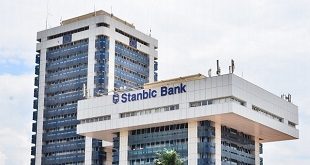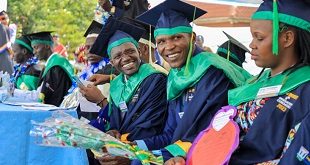No closing borders
Following the latest declaration, the WHO advised that no neighbouring country should close its borders or place any restrictions on travel and trade.
“Such measures are usually implemented out of fear and have no basis in science,” it said in a statement, “They push the movement of people and goods to informal border crossings that are not monitored, thus increasing the chances of the spread of disease.”
Most critically, WHO said, these restrictions can also compromise local economies and negatively affect response operations from a security and logistics perspective.
The WHO also advised national authorities to work with airlines and other transport and tourism industries to ensure that they do not exceed WHO’s advice on international traffic. It said entry screening for Ebola at airports or other ports of entry outside the region is not necessary.
The WHO guidelines on borders are relevant in cases such as a recent Ebola incident involving Uganda in which a female DRC fishmonger visited the Ugandan border market at Mpondwe while sick. She died on July 15 after returning home to the DRC and testing positive for Ebola.
The woman’s movements or the people who transported her or her goods are yet to be established, a WHO statement said. The ministry and WHO also said they were working to identify her contacts as she was a known trader in the market. She entered Uganda via panya routes and did not undergo screening which happens at formal border posts.
Mpondwe is a big market frequented by an estimated 12,000 to 15,000 people on a given day. Following the case, WHO has said it will work with authorities in Uganda to vaccinate about 590 fishmongers at the market.
Uganda had been previously hailed by WHO for containing the spread of the virus after two people died of the Ebola virus in the Western Uganda district of Kasese.
“The health ministry and WHO appeal to all Ugandans to remain vigilant and alert. Avoid handshaking, hugging, mass gatherings and observe infection, prevention and control practices such as washing hands with soap and clean water at all times both at health facilities and communities,” the statement continued.
So far, the Ministry of Health has said it will not declare Uganda Ebola free even if the mandatory waiting 42 period ends without a new case being confirmed. The ministry says it will wait until the situation in DRC stabilises.
The DRC Ebola is being used as a testing ground for various therapies in the hunt for a lifesaving treatment, according to a report by Médecins Sans Frontières (MSF). Clinical trials on patients are gathering evidence on experimental therapies, to provide a proven option when the deadly virus inevitably emerges again.
The first multidrug clinical trial of Ebola therapies, which began enrolling patients in November 2018, will compare the effectiveness of three different antibody treatments and one antiviral drug. One therapy tested briefly during the 2014–2016 outbreak in West Africa, the largest ever, has already shown promise.
An MSF report quotes Richard Davey, one of the principal trial investigators and the deputy clinical director at the U.S. National Institute of Allergy and Infectious Diseases in Bethesda, Maryland saying, with the trial data, “we’ll be able to say, ideally, that this drug or that drug actually does work, not just we think or hope it does work”.
Ugandan scientists are also involved in research on an experimental vaccine for Ebola Sudan. The one in DRC is Ebola Zaire, the deadliest. At least 40 people comprising males and females are being sought to participate in the 48 week’s study by Makerere Walter Reed Project in Kampala.
The study will use the VRC-EBOADC086-00-VP vaccine that was developed by the Vaccine Research Center and the National Institute of Health-NIH in Maryland, USA. The trials are being sponsored by the NIH, National Institute of Allergy and Infectious Diseases, Vaccine Research Center, U.S Military HIV Research Program and the U.S Department of Defense.
****
 The Independent Uganda: You get the Truth we Pay the Price
The Independent Uganda: You get the Truth we Pay the Price


